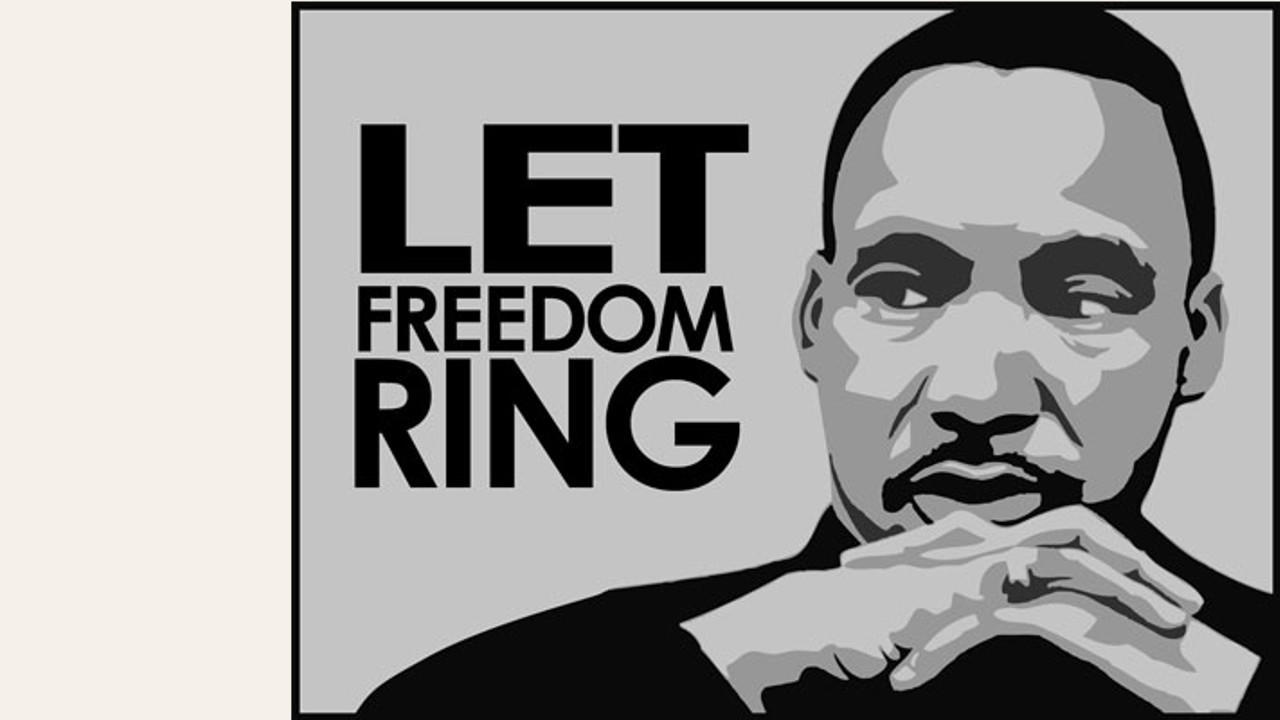Dr. Martin Luther King, Jr. was a Yogi
Jan 16, 2017

In 1959, Dr. Martin Luther King, Jr. traveled to India to study Mahatma Gandhi’s principles of non-violent social change. Though Gandhi was assassinated in 1948, Dr. King, Jr. was able to meet with many leaders to learn about these principles, which stemmed from the teachings of Yoga. Gandhi-ji studied the Bhagavad Gita every day. It is one of the main texts of Yoga. When he was faced with a difficult situation in the push for independence – and there were many – he turned to The Gita.
In it, four paths of Yoga are described. Each is a way to approach greater Self-understanding. People have different temperaments and one path may suit one person more than another. Ultimately, a balance of all four paths is the surest route, though one may focus more on one than another. The four paths are:
- Raja Yoga – The path of meditation.
- Jnana Yoga – The path of intense self-inquiry. This is the most difficult path.
- Bhakti Yoga – The path of devotion. This is the easiest and safest path.
- Karma Yoga – The path of selfless service.
Both great men lived the life of a yogi - one who pursues truth, one who examines themselves deeply, one who lives by these personal codes laid out by Patanjali in the Yoga Sutras and Lord Krishna in the Bhagavad Gita. We are extremely fortunate to have had these Great Souls among us to show by example how to transform our deepest struggles through non-violent means.
Karma King
Dr. King was a karma Yogi. He dedicated his life to the service of others. He understood that the suffering of one is the suffering of all and to harm another harms oneself and all others.
As popular as Yoga has become, most still think of this practice as a way to release stress and exercise the body. As you can see in these four paths, they involve the mind, not the body. The body is a useful tool to access and train the mind, yet Yoga is ultimately a practice of mindfulness. Dr. King embodied a mindful Yogi. Though he may have never practiced the Yoga postures, he practiced Karma Yoga every day.
Shaping the Mind
Another main text for Yoga is the Yoga Sutras of Patanjali. The two practices of truthfulness and self-discipline are found in these Yoga Sutras. Dr. King was a master of both “satya”, or truthfulness, and “tapas”, self-discipline. When Dr. King said, “We must forever conduct our struggle on the high plane of dignity and discipline” he was talking about tapas.
When teaching Yoga to children, it is these deeper teachings we wish to impart. It can be woven into the games and animal-shaped Yoga poses. Children crave this. Whenever I bring up the topic of truthfulness or non-violence in class, even 6-year-old students lean in. This is our soul speaking to us, wanting to connect, to be a part of something, not separate. Yoga gives us an experience of connection, Union.
Today it is easy to think of Yoga as some fancy form of exercise but the true exercise is within ourselves, as these two great men showed. We transform our relationship with ourselves and others -using these teachings as a map - to experience this Union, this Yoga.
Recommended Reading
If you are interested in reading the two books mentioned above, I recommend the translation and commentary by Swami Satchidananda. His writing is simple, elegant and wise. I recommend these books to both beginners and my young Yoga students who wish to study further.
- The Living Gita – The Complete Bhagavad Gita, A commentary for modern readers by Swami Satchidananda
- The Yoga Sutras of Patanjali, Translation and Commentary by Sri Swami Satchidananda
“Darkness cannot drive out darkness: only light can do that.
Hate cannot drive out hate: only love can do that.” ~ Dr. Martin Luther King, Jr.
Go Deeper
If you're interested in knowing more about the history and philosophy of Yoga, you'll love our Principles Behind the Practice podcasts. There's a bank of these 20-minute audio workshops available to our Ohana Members. You can check it out for free for 15 days.




